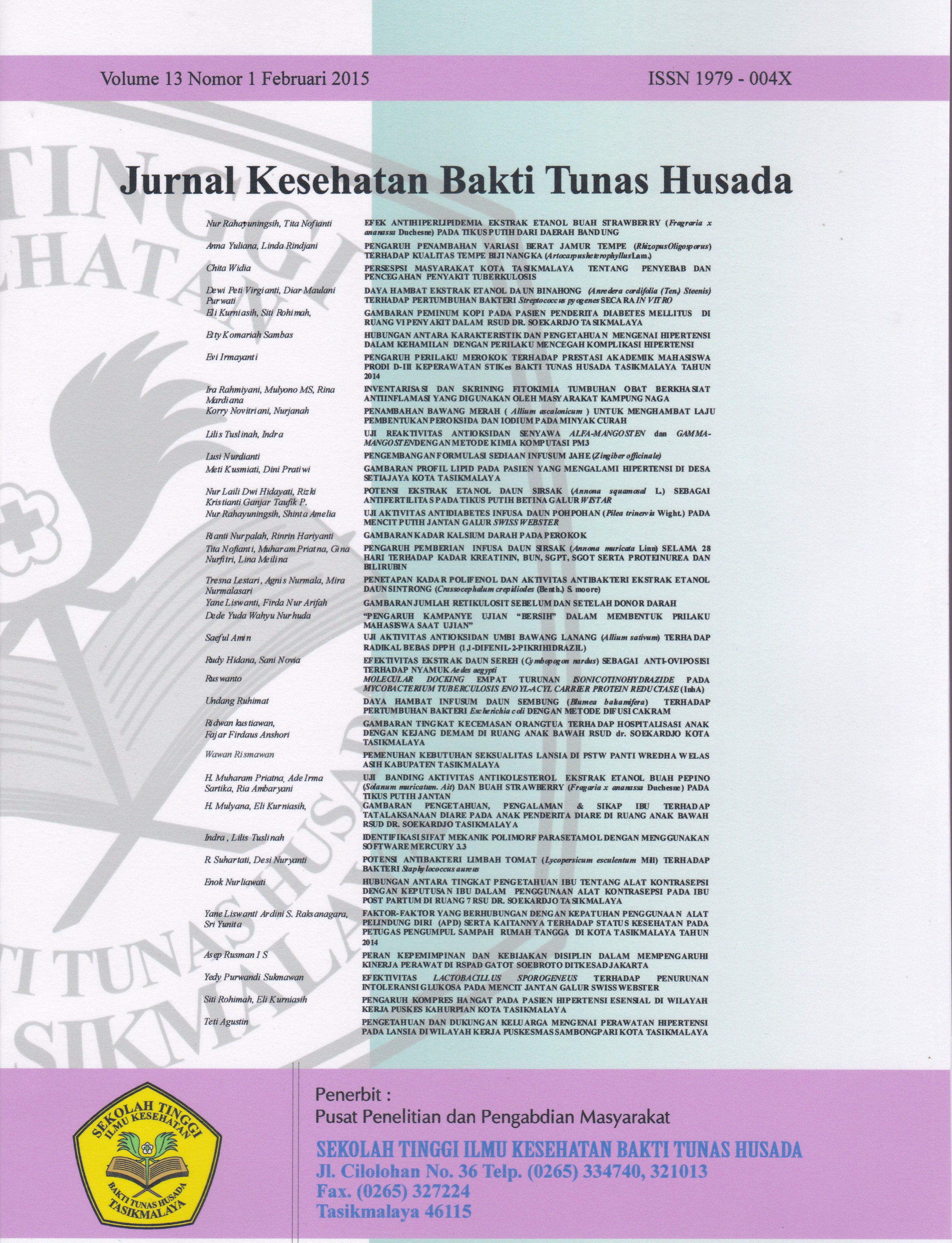PENGARUH PENAMBAHAN VARIASI BERAT JAMUR TEMPE (RhizopusOligosporus) TERHADAP KUALITAS TEMPE BIJI NANGKA (ArtocarpusheterophyllusLam.)
DOI:
https://doi.org/10.36465/jkbth.v13i1.5Abstract
Tempe is a fermented food specialties and one of Indonesia's population.In general, raw material for making tempeh is soybeans. Soybean prices in the market fluctuate, because Indonesia still imports soybeans from the United States. Soybean prices are rising on world markets caused soybean prices in the country also increased, including processed products. In Indonesia, tempe-making has become a cottage industry. Tempe contains many nutrients needed by the body such as proteins, fats, carbohydrates, and mineral. Some research indicates that nutrients tempe easier digested, absorbed and utilized in the body. This is because the fungi that grow on soybeans hydrolyze complex compounds into simpler compounds that are easily digested by humans. In general, raw material for making tempeh is soybeans. In this study, making tempeh uses raw materials that seeds of jackfruit (Artocarpus Integra Merr). In general, consumption of jackfruit seeds just by boiling it. Tempe is aided by the addition of tempeh or tempeh fungus (Rhizopus oligosporus), at a temperature of 25 ° -37 ° C with an incubation time ± 60 hours or 3 days. The formation mechanism of germination tempeh, some carbohydrate compounds are needed in order to start the spore swelling can occur. The swelling was followed by protrusion of the tube exit kecambahnya, when available sources of carbon and nitrogen from the outside and annosa sugars glucose and xylose.
Keywords: Tempe, Jackfruit Seed, levels of carbohydrates, protein content, fat content.










